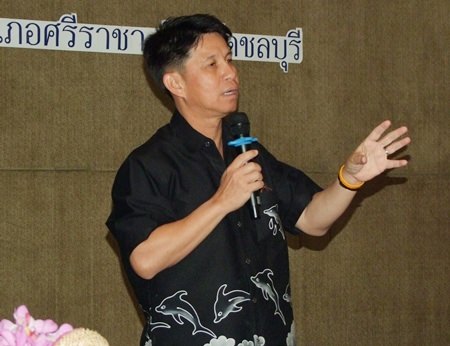
Clean industry, education and the environment were called the pillars of Chonburi’s development over the next four years in a new 4-year plan that bets the future on the government’s Eastern Economic Corridor project.
Gov. Pakarathorn Thienchai unveiled the province’s 2017-2021 development plan during a Sept. 19 news conference at the Cape Racha Hotel in Sriracha. The plan states three main objectives for the coming four years:
* Stable growth in Chonburi’s main industries – manufacturing, tourism and agriculture – using local energy sources, participation of all sectors and full employment;
* Education and training the public to support economic growth, improve the environment and create good quality of life;
* Development of natural resources while reducing pollution and encroachment of protected lands.
Key to the province’s development, Pakarathorn said, was the government’s proposed Eastern Economic Corridor project covering Chonburi, Rayong and Chachoengsao, which aims to make the Eastern Seaboard a base of investment and technology.
Chonburi is betting on an influx of government funds to bankroll long-time pet projects, including upgrade of U-Tapao-Rayong-Pattaya Airport, construction of high-speed rail lines, investment in electric vehicles and robots, expansion of Laem Chabang Port and development of a “city of the future”.
In addition to high-speed passenger rail lines linking U-Tapao with Bangkok’s Don Mueang and Suvarnabhumi airports, the EEC also calls for double-track freight lines connecting three piers and Thailand’s industrial heartland.
Reiterating his belief the EEC is a magic bullet for the province, Pakarathorn called it a “base of mega investment able to create income, take care of the elderly and benefit local people”.
However, he said, the most important element of the plan is education. Currently, many educational institutions are incapable of training people for the occupations the EEC aims to create. That needs to change, he said.
He said publicizing the province’s development plan will show what needs to be done by when so the public and private sectors can adjust.




